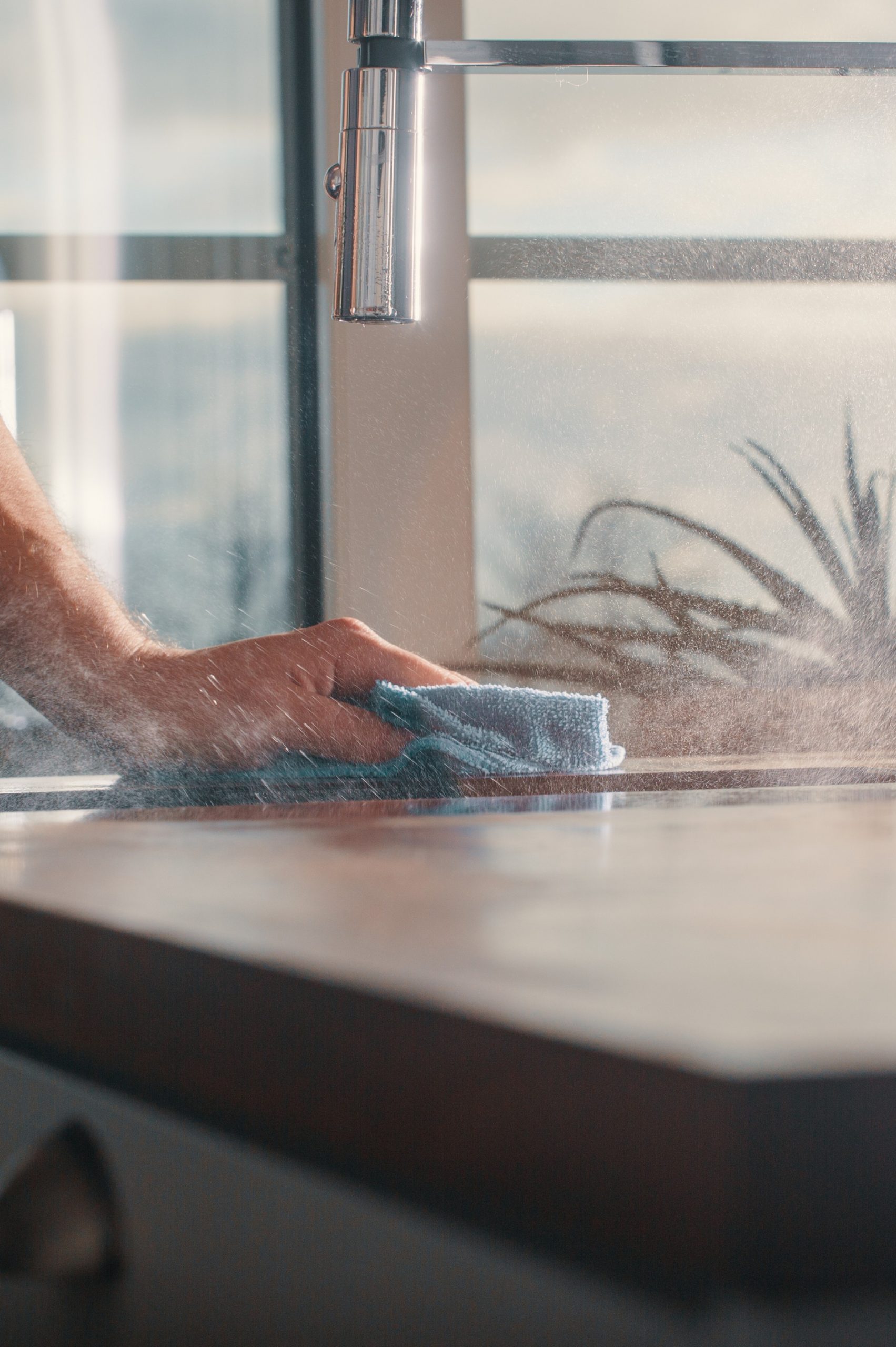How long can some bacteria and viruses survive on common surfaces?
Hygiene and professional cleaning are fundamental pillars for ensuring safe, healthy, and reliable environments. But why is it so important to regularly disinfect the surfaces we use every day? The answer lies in the behavior of microorganisms.
Both bacteria and viruses can survive for considerable periods of time on common surfaces, depending on factors such as temperature, humidity, type of material, and ventilation of the space.
Survival of bacteria on surfaces
Bacteria have a remarkable ability to adapt and can persist on different materials:
– Escherichia coli (E. coli): up to 24 hours on dry surfaces.
– Staphylococcus aureus: between 7 days and several weeks, especially on plastic or stainless steel.
– Salmonella spp.: up to 4 hours on copper surfaces, but several days on stainless steel or plastic.
These bacteria are often associated with food contamination or hospital infections, so rigorous sanitation is essential for their prevention.
Survival of viruses on surfaces
Viruses, although they need a host to multiply, can remain viable for significant periods of time:
– Influenza virus: up to 48 hours on smooth surfaces such as steel or plastic.
– Norovirus: highly resistant, it can survive for weeks on contaminated surfaces.
– Coronavirus (SARS-CoV-2): studies indicate up to 72 hours on plastic and stainless steel, about 24 hours on cardboard, and only a few hours on copper.
Factors influencing survival
The persistence of microorganisms depends on multiple environmental conditions:
Temperature: higher temperatures tend to reduce viability.
Relative humidity: high humidity can prolong the survival of some viruses and bacteria.
Nature of the surface: porous surfaces (such as fabrics or paper) retain microorganisms for less time than smooth, non-porous surfaces (plastic, steel).
The importance of professional hygiene
In high-traffic environments such as hospitals, gyms, schools, hotels, or offices, the risk of cross-contamination is high. Simply sharing a door handle, keyboard, cell phone, or piece of equipment can be enough to transmit pathogens.
This is where professional hygiene plays a crucial role. The use of proven, effective cleaning solutions tailored to each context, such as those developed by Glow Professional, can drastically reduce the microbial load, ensuring safer and more secure environments.
Summary
The survival time of bacteria and viruses on common surfaces reinforces the importance of regular and proper sanitation procedures. Visible cleaning is not enough; it is essential to apply effective solutions, developed in accordance with European quality standards, that eliminate pathogens and promote a truly safe environment.
At Glow Professional, we work every day to create products that not only guarantee proven effectiveness but also contribute to a healthier and more sustainable future.

